Disclosure: This article contains affiliate links. We may earn a commission from purchases at no extra cost to you, which helps our travel content.
There's something profoundly magical about cities that whisper their histories through architecture. As a translator who spends her days navigating between languages and cultures, I find myself drawn to places where buildings speak their own distinct dialect. Ponce—Puerto Rico's second city—is precisely this kind of destination: a place where Spanish colonial splendor, Creole adaptations, and neoclassical ambitions create a visual conversation that spans centuries. While tourists flock to San Juan, Ponce sits on the southern coast like a well-kept secret, its streets lined with what locals proudly call Ponce Creole—a distinctive architectural style that deserves your undivided attention.
Plaza Las Delicias: The Heart of Ponce
Every meaningful exploration of Ponce begins at Plaza Las Delicias, the city's living room and beating heart. When my daughter and I first stepped into this elegant square, the contrast with Seoul's modernist landscape couldn't have been more striking. Two landmark buildings immediately command attention: the striking black and red wooden Parque de Bombas (the former fire station) and the Cathedral of Our Lady of Guadalupe with its imposing neoclassical façade.
The plaza itself is a masterclass in colonial urban planning—a central gathering space flanked by important civic buildings, shaded by trees, and furnished with ornate iron benches where locals and visitors alike gather throughout the day. My daughter immediately noticed the fountains—le fontane, as my Italian mother would say—that provide both visual beauty and the soothing soundtrack of flowing water.
I recommend arriving early morning with a strong Puerto Rican coffee from one of the nearby cafés and simply observing the plaza come to life. Bring your travel journal to sketch architectural details or jot down observations—something I've done since my university days studying linguistics in Rome. The quality of morning light on the cathedral's façade alone is worth the early wake-up call.
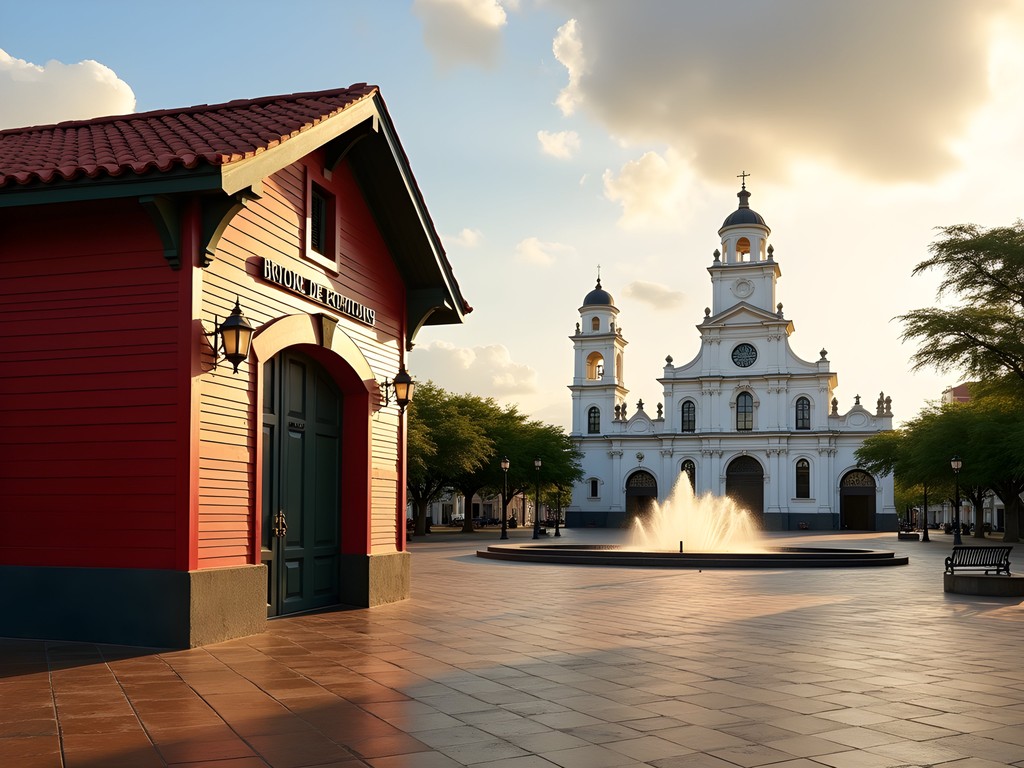
💡 Pro Tips
- Visit early morning (before 9am) or late afternoon for the best light and fewer crowds
- The Tourist Information Office at the plaza provides excellent free maps of architectural walking routes
- Look for the small bronze plaques on historic buildings that explain their significance in both Spanish and English
The Magnificent Ponce Creole: A Unique Architectural Language
What truly distinguishes Ponce is its distinctive architectural vernacular known as Ponce Creole—a style that evolved throughout the 19th century when the city prospered from sugar, coffee, and shipping. As a translator, I'm fascinated by how architectural styles, like languages, adapt and evolve through cultural exchange.
The Creole style here represents a fascinating dialogue between European neoclassical ideals and tropical practicality. Walking along Calle Isabel or Calle Mayor, you'll notice the hallmarks: high ceilings for heat circulation, inner courtyards (patios interiores) that channel breeze, ornate wrought-iron balconies, and the distinctive use of bateyes—decorative cement tiles that often feature intricate geometric patterns.
During our exploration, my daughter and I played a game identifying architectural features that reminded us of other places we've visited—Roman columns, Moorish arches, French balustrades—all adapted to Puerto Rico's climate and cultural context. I've found that my compact binoculars are invaluable for appreciating the detailed craftsmanship on upper facades and cornices that would otherwise go unnoticed.
For the most immersive experience, I recommend staying at one of the boutique hotels housed in restored colonial buildings. The authentic architectural details combined with modern comforts create a perfect balance between historical appreciation and comfort.

💡 Pro Tips
- Look up! The most interesting architectural details are often above eye level
- Many historic buildings are private homes—respect residents' privacy while appreciating facades
- The afternoon light between 3-5pm creates dramatic shadows that highlight architectural details
Museo de Arte de Ponce: Architectural Marvel and Cultural Treasure
While exploring Ponce's architectural landscape, one cannot overlook the Museo de Arte de Ponce—a modernist masterpiece designed by Edward Durell Stone that stands in striking contrast to the city's colonial character. When I visited with my daughter last spring, we were immediately struck by its distinctive hexagonal galleries and the remarkable way natural light filters through the building.
The museum itself houses an impressive collection of European and Latin American art, but it's the dialogue between the building's modernist design and its Pre-Raphaelite treasures that creates such a compelling visitor experience. As someone who has spent years translating between languages and cultures, I appreciate how the museum creates a visual conversation between different artistic traditions.
What many visitors miss is the museum's garden courtyard—a tranquil space where I spent an hour sketching architectural details while my daughter explored the sculpture installations. I always travel with my portable watercolor set for moments like these. There's something deeply satisfying about capturing architectural impressions through quick watercolor studies rather than just photographs.
The museum also offers excellent guided tours focusing specifically on the building's architecture—worth every minute for design enthusiasts. Our guide, a local architecture student, shared fascinating insights about how Stone adapted his modernist vision to Puerto Rico's climate and cultural context.
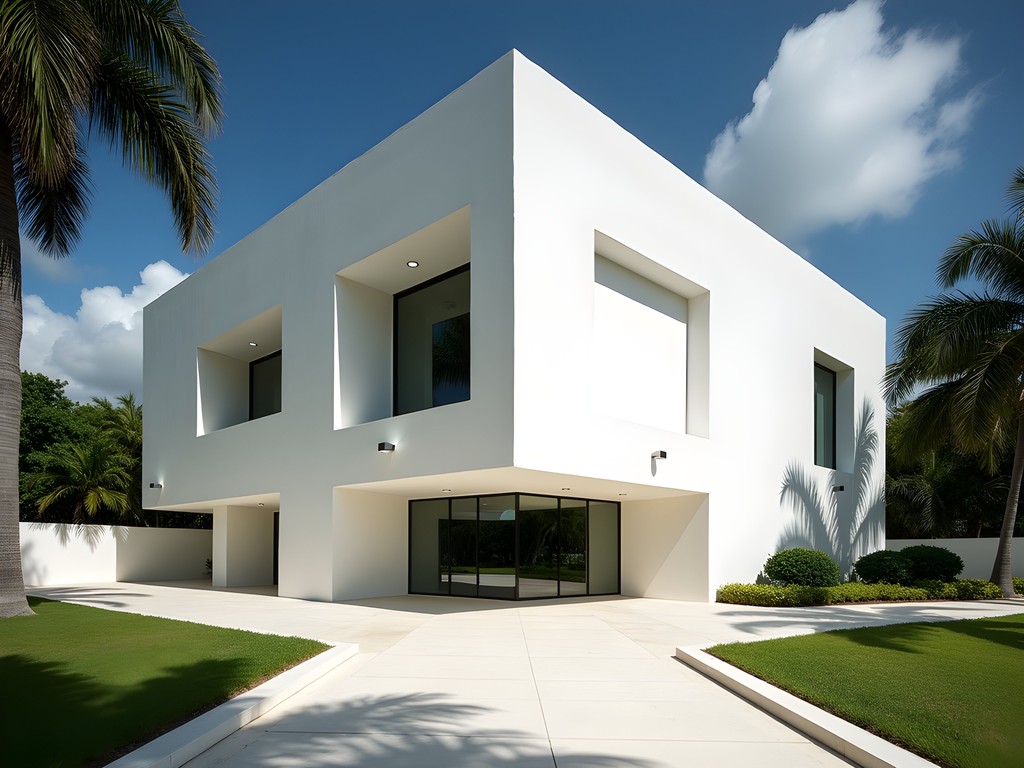
💡 Pro Tips
- Visit on Wednesday afternoons when admission is reduced
- The museum café offers excellent local coffee and a perfect view of the sculpture garden
- Ask about the architectural tour schedule at the information desk—they're not always advertised but run regularly
Casa Armstrong-Poventud: Intimate Glimpse into Colonial Life
Of all Ponce's architectural treasures, Casa Armstrong-Poventud holds a special place in my heart. This meticulously restored 1899 residence on Calle Reina offers visitors the rare opportunity to step inside a genuine Ponce Creole home and experience the spatial organization that defined colonial living.
What makes this house particularly fascinating is how it embodies the cultural hybridity of Puerto Rico itself. The neoclassical facade gives way to interior spaces designed around cross-ventilation and natural cooling—architectural solutions perfectly adapted to tropical living before air conditioning. The central courtyard, with its small fountain and tropical plants, creates a microclimate that naturally cools the surrounding rooms.
During our visit, my daughter was captivated by the original furniture and household items that offer glimpses into daily life from another era. I found myself drawn to the linguistic aspects—the multilingual documents and books that reflected Ponce's position as a cosmopolitan trading port with connections to Europe and the Americas.
Before visiting, I recommend reading up on Puerto Rican colonial history with a good cultural guidebook to appreciate the historical context. The house's caretakers are incredibly knowledgeable, but having background knowledge enriches the experience significantly.
After exploring the house, take time to enjoy the small garden at the rear—a tranquil space where I enjoyed a moment of quiet reflection while my daughter sketched architectural details in her travel journal.
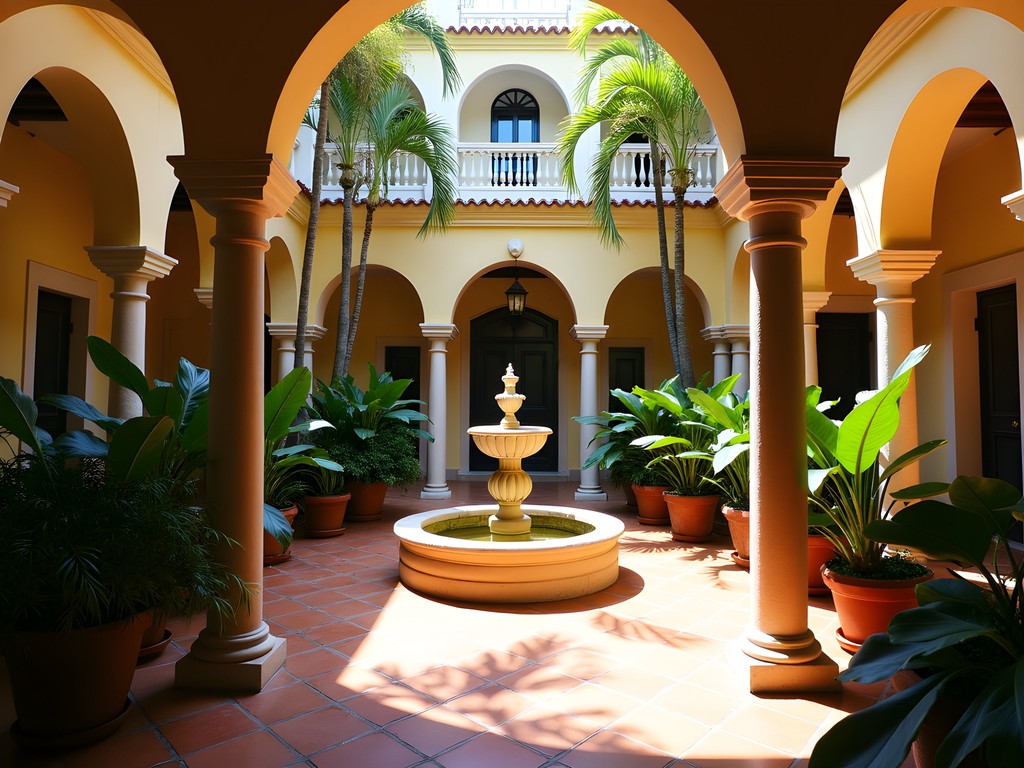
💡 Pro Tips
- Visit during weekday mornings when the house receives fewer visitors
- Look for the original architectural blueprints displayed in one of the studies—they reveal fascinating details about the design process
- Don't miss the kitchen with its original coal-burning stove and period cooking implements
Twilight Architecture Walk: Ponce After Dark
Perhaps my most cherished memory of Ponce was an evening architecture walk my daughter and I took on our final night. As the Caribbean sun began its descent, the city's buildings transformed—their pastel facades taking on golden hues before being dramatically illuminated against the deepening blue sky.
Start at Plaza Las Delicias around 6:30 pm when the Parque de Bombas and Cathedral become dramatically lit. From there, follow Calle Isabel northward, where many historic buildings feature thoughtful illumination that highlights their architectural details. The Fox Delicias Theater, with its art deco facade, is particularly striking after dark.
What makes evening exploration special is how the cooler temperatures and gentle lighting transform the experience. Architectural details that might go unnoticed during harsh daylight—intricate ironwork, subtle relief patterns, ornate cornices—suddenly become prominent features in the strategic illumination.
For this twilight walk, I recommend bringing a compact tripod if you're interested in photography. The combination of artificial lighting and blue hour creates challenging but rewarding conditions for architectural photography. My daughter and I captured some of our most memorable images during this evening stroll.
The walk naturally concludes at Plaza Muñoz Rivera, where you can enjoy a well-deserved dinner at one of the restaurants overlooking the square. There's something magical about discussing the day's architectural discoveries while dining beside buildings that have witnessed centuries of similar conversations.

💡 Pro Tips
- Start your walk 30 minutes before sunset to experience the transition from day to night
- Many buildings have information plaques that are illuminated after dark
- Bring a light jacket as evening breezes can be surprisingly cool, especially during winter months
Final Thoughts
As our weekend in Ponce drew to a close, I found myself reflecting on how architecture serves as both cultural artifact and living heritage. In a world where globalization increasingly homogenizes our built environments, places like Ponce—with their distinctive architectural languages—become increasingly precious.
What makes Ponce truly special isn't just individual buildings but the coherent urban ensemble they create. The city offers a rare opportunity to experience a preserved colonial cityscape that evolved organically over centuries. As a translator who spends her professional life bridging cultural gaps, I value how Ponce's architecture tells complex stories about colonialism, adaptation, prosperity, and cultural exchange without saying a word.
Whether you're an architecture enthusiast, a history buff, or simply someone who appreciates beautiful surroundings, Ponce rewards curious visitors with visual treasures at every turn. Bring comfortable walking shoes, an observant eye, and perhaps a sketchbook—you'll find yourself wanting to record impressions of this architectural gem that remains, somehow, still undiscovered by mass tourism. Arrivederci until next time, when we'll explore another hidden architectural wonder together.
✨ Key Takeaways
- Ponce offers the most cohesive collection of Spanish colonial and Creole architecture in the Caribbean
- The city is easily explored on foot over a weekend, with most architectural highlights concentrated in the historic center
- Morning and evening provide the most dramatic lighting for appreciating and photographing architectural details
📋 Practical Information
Best Time to Visit
Year-round, though January-April offers the most pleasant temperatures and lower humidity
Budget Estimate
$150-250 per day for mid-range accommodations, meals, and activities
Recommended Duration
2-3 days
Difficulty Level
Easy

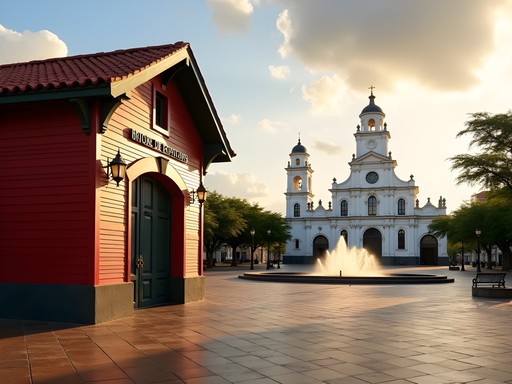
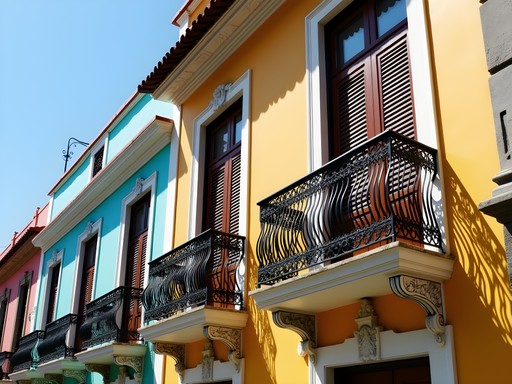
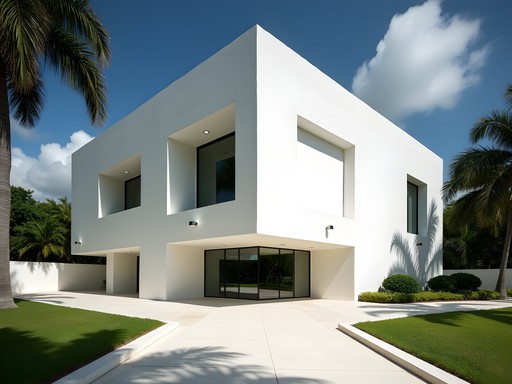
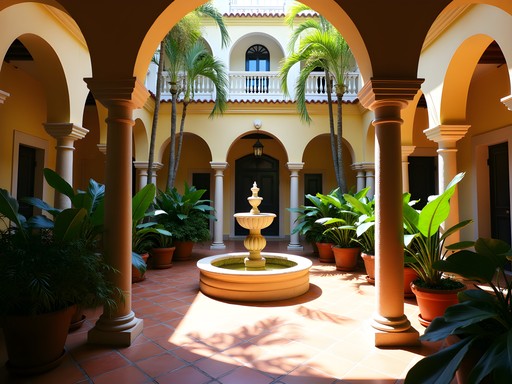
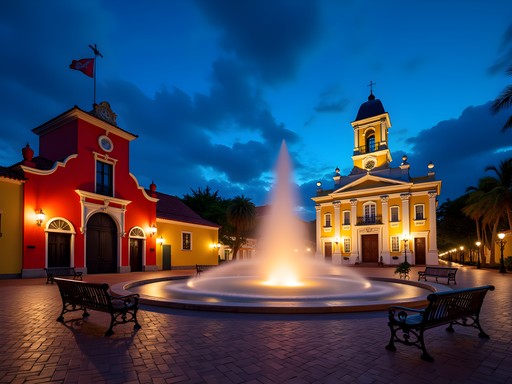










Comments
coffeelover
Those pastel facades are gorgeous! How many days would you recommend staying in Ponce to see all these architectural gems? Is it doable as a day trip from San Juan or better to stay overnight?
Brooklyn Washington
I'd definitely recommend at least one overnight stay! We did two nights and it felt perfect - gave us time to explore at a relaxed pace and see the buildings in different lighting. The evening atmosphere in Plaza Las Delicias is magical!
coffeelover
Thanks for the tip! Booking a stay now. Can't wait to see that evening lighting you mentioned!
moonpro
First time visitor to Puerto Rico here! Would you recommend Ponce over San Juan for someone interested in architecture but with only 4 days total?
blueace
Not the author but I'd split your time - 2 days San Juan, 2 days Ponce. They offer very different architectural styles and experiences!
Brooklyn Washington
I agree with blueace! Both cities have incredible architecture but with different characters. San Juan's Old Town has that fortress-like Spanish colonial feel, while Ponce showcases more of the ornate Creole style. If architecture is your main interest, you'll want to experience both!
Savannah Walker
Brooklyn, your post brought back so many memories! I visited Ponce during a solo backpacking trip through PR last year and was completely mesmerized by the architecture. The Museo de Arte was closed for renovations when I was there, so I'm living vicariously through your photos! The Casa Armstrong-Poventud was my highlight - that intricate woodwork is unbelievable. For anyone planning a trip, I'd recommend taking the walking tour with local guides - they share fascinating stories about the colonial families that built these mansions. I used my travel guidebook to find a wonderful local guide who specialized in architecture.
coffeelover
Savannah, do you remember the name of your guide? Planning a trip there in November!
Savannah Walker
His name was Miguel! You can find him through the tourist office near Plaza Las Delicias. Worth every penny!
coolwanderer
Just got back from Ponce last month and you captured its essence perfectly! The Plaza Las Delicias was my favorite spot too - spent hours just sitting there people-watching and admiring the fountains. Did you get a chance to visit the Parque de Bombas? That red and black striped building blew my mind. The contrast between Ponce and San Juan is so stark - felt like two completely different countries.
Brooklyn Washington
Thanks for reading, coolwanderer! Yes, the Parque de Bombas was incredible - I should have included more about it! You're right about the contrast with San Juan. Did you rent a car or use public transportation?
coolwanderer
We did public transportation! Bit challenging but part of the adventure. The local buses were actually pretty reliable once we figured out the schedule.
sunnymood
How's the public transportation in Ponce? Is it easy to get around to all these sites without renting a car?
Brooklyn Washington
The historic center is very walkable! Most architectural highlights are within a 15-20 minute walk of Plaza Las Delicias. For anything further, we used rideshares which were affordable. There are some public buses but they're not as reliable for tourists.
Willow Sanchez
As someone who studied architectural history, I'm so glad you highlighted Ponce! It's often overshadowed by San Juan but has some of the most impressive Spanish colonial architecture in the Caribbean. The Museo de Arte is particularly special - the building itself is as much a masterpiece as the art inside. When I visited, I used architectural guidebook which had excellent walking tours of the historic district with details about the unique features of Ponce Creole style. Did you notice how many buildings incorporate interior courtyards? That's my favorite element - bringing nature into these urban structures.
sunnymood
I've been debating between San Juan and Ponce for my trip. This post and your comment are pushing me toward Ponce! Those courtyards sound lovely.
Willow Sanchez
@sunnymood Why not both? They're only about a 2-hour drive apart. Start in San Juan for the more touristy experience, then head to Ponce for a more authentic feel!
islandway
How did you get around Ponce? Is it walkable or did you need to rent a car?
Brooklyn Washington
The historic center is very walkable! We spent most of our time on foot, but rented a car for one day to visit some sites outside the city like Hacienda Buena Vista.
wildphotographer
Stunning photos of Casa Armstrong-Poventud! What camera setup did you use?
Olivia Sanchez
Your post brought back so many memories! I visited Ponce last year and was equally captivated by the Ponce Creole architecture. Something you didn't mention that I found fascinating was the fire station (Parque de Bombas) with its bold red and black stripes - such a photogenic landmark! I spent hours just sitting in Plaza Las Delicias watching locals play dominoes while admiring the cathedral. The blend of Spanish colonial and Art Deco influences throughout the city creates such a unique visual identity. Did you get a chance to visit any of the smaller museums?
Brooklyn Washington
Olivia, you're absolutely right about Parque de Bombas! I can't believe I didn't include it - those red and black stripes are iconic. We did visit the smaller History Museum of Ponce but ran out of time for others. Next time!
escapemaster
Thinking of visiting Ponce next spring. How many days would you recommend spending there to see all these architectural sites?
Brooklyn Washington
I'd recommend at least 3 full days! We rushed through in a weekend and wished we had more time. The architecture deserves slow exploration, especially the Casa Armstrong-Poventud.
escapemaster
Thanks Brooklyn! Will definitely plan for 3-4 days then. Any hotel recommendations near Plaza Las Delicias?
Venture X
Premium card with 2X miles, $300 travel credit, Priority Pass